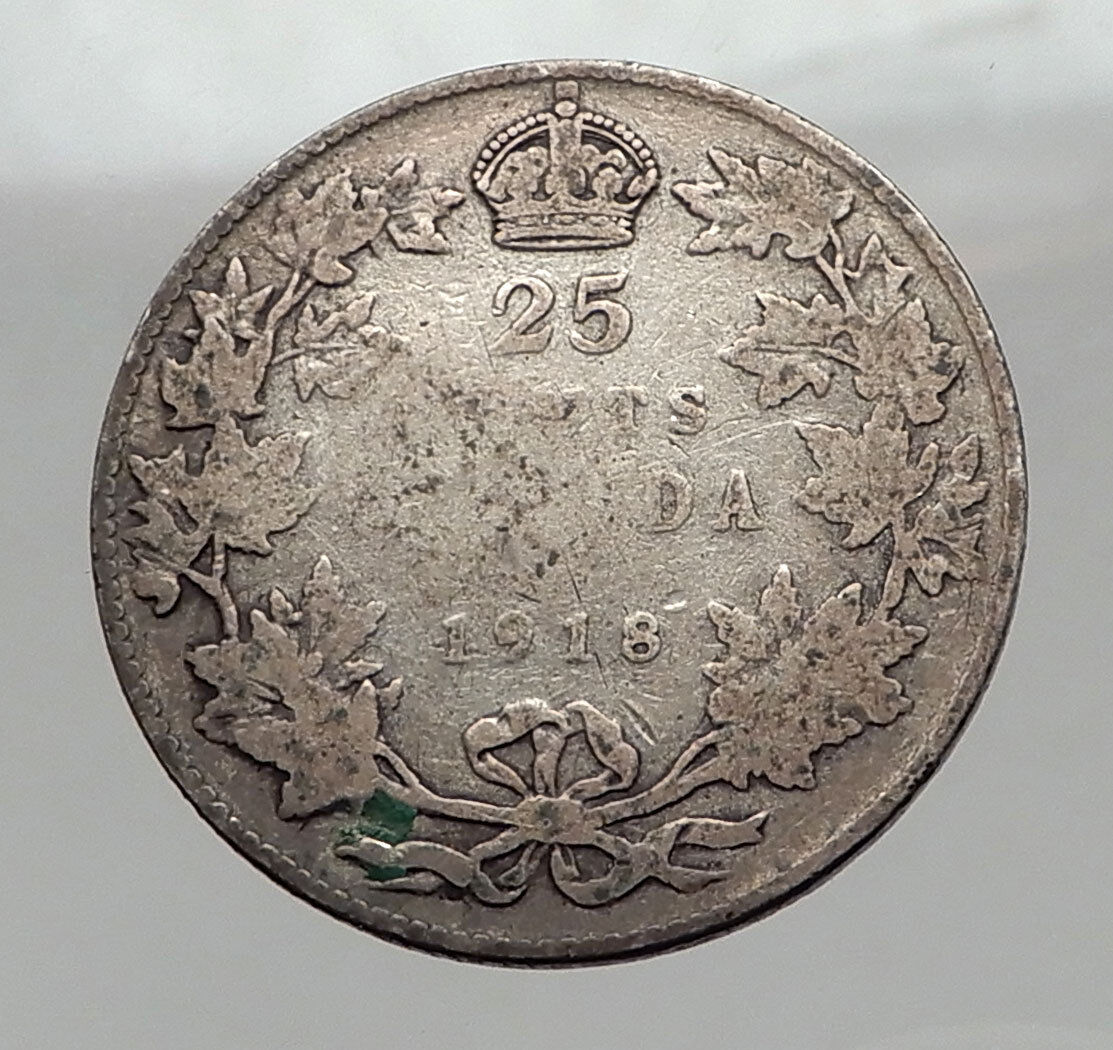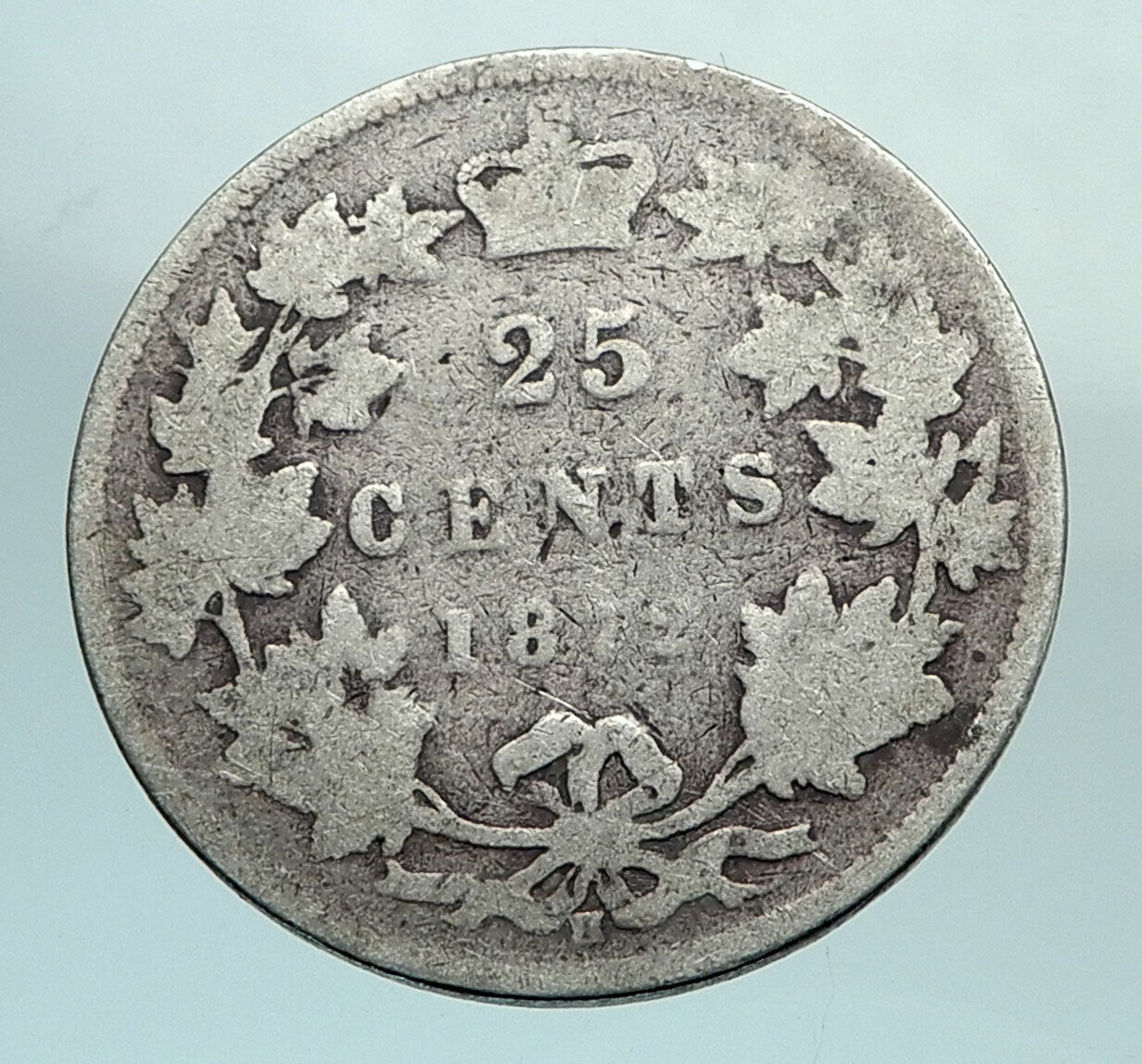|
Canada under Elizabeth II – Queen: 6 February 1952–present
1968 Silver 25 Cents 23.8mm (5.86 grams) 0.500 Silver (0.0931 oz. ASW)
Reference: KM# 62a | Obverse Designer: Machin
ELIZABETH II D◦G◦REGINA, Crowned young bust of
Elizabeth II right.
1968 ◦ CANADA ◦ 25 cents around forepart of Caribou standing left.
You are bidding on the exact item pictured,
provided with a Certificate of Authenticity and Lifetime Guarantee of
Authenticity.
available for sale in my storeall coins of CanadaClick here to see

A
Caribou (North
America) (Rangifer tarandus caribou, and other trinomials under
Rangifer t.) is any of several North American subspecies, ecotypes,
populations, and herds of the species Rangifer tarandus. In North America
caribou vary in size from the smallest, the
Peary caribou
, to the largest, the
boreal woodland caribou
. The North American
range of caribou extends from
Alaska
, through the
Yukon
, the
Northwest Territories
,
Nunavut
, into the boreal forest and south
through the
Canadian Rockies
and the
Columbia
and
Selkirk Mountains
. Barren-ground,
porcupine caribou
and Peary caribou live in the
tundra
, while the shy woodland caribou, prefers
the boreal forest. Two major subspecies in North America, the porcupine caribou
and the
barren-ground caribou
form large herds and
undertake lengthy seasonal migrations from birthing grounds, to summer and
winter feeding grounds in the tundra and
taiga
. The migrations of porcupine caribou
herds are among the longest of any terrestrial mammal. Barren-land caribou are
also found in
Kitaa
in Greenland, but the larger herds are in
Alaska, the Northwest Territories, and Nunavut.
The circumpolar species itself, Rangifer tarandus, at a global level,
is listed by the
International Union for Conservation of Nature
(ICUN) “as Least Concern due to a wide circumpolar distribution and presumed
large populations.” The populations of subspecies, ecotypes, populations and
herds of caribou in North America are in decline and one subspecies, the iconic
boreal woodland caribou, has been listed by COSEWIC as
threatened
since 2002.
The
George River caribou herd
(GRCH), in the
Ungava Peninsula
of
Quebec
and
Labrador
in eastern Canada was once the world’s
largest herd with 800,000–900,000 animals. By 2012 the herd numbered 27,600 and
declined to 14,200 animals in 2014.
The meta-population of the more-sedentary subspecies R. t. caribou, or
woodland caribou, spans the
boreal forest of Canada
from the
Northwest Territories
to Labrador. They are shy
animals whose main food source is arboreal lichens of the mature forests and
mainly live in marshes, bogs, lakes, and river regions. Since it takes hundreds
of years for a biomass of tree lichen to be adequate to sustain boreal woodland
caribou populations, deforestation has been a major factor in the decline of
their numbers. The historic range of the boreal woodland caribou covered over
half of present-day Canada, stretching from
Alaska
to
Newfoundland and Labrador
and as far south as
New England
,
Idaho
, and
Washington
. The smallest subspecies in North
America, the Peary caribou is found in the High and Low Arctic, in the Northwest
Territories (particularly, Banks Island) and in Nunavut (mainly Baffin Island).
The caribou is a
specialist
that is well adapted to cooler
climates, with hollow-hair fur that covers almost all of its body including its
nose, and provides insulation in winter and flotation for swimming. Caribou can
reach a speed of 60–80 km/h (37–50 mph). Young caribou can already outrun an
Olympic sprinter when only a day old. The caribou’s favourite winter food is
fruticose
deer lichen
. Seventy percent of the diet of
woodland caribou consists of arboreal lichen which take hundreds of years to
grow and are therefore only found in mature forests.
Although there are many variations in colour and size, Canadian Geographic
magazine states that in general, barren-ground caribou have larger antlers than
the woodland caribou subspecies. Barren-ground caribou have large distinguishing
white patches of fur that extend beyond the neck onto the back, a white muzzle
and a face that is darker than the rest of the body. Their fur is sandy-beige in
winter and light brown in summer. The woodland caribou have a wider more compact
body and wider antlers. The coat is a rich dark brown in summer and dark grey in
winter. Both the barren-ground and woodland caribou often have white “socks”
above their hooves. On average the male weighs 90–110 kg (200–240 lb) and
measures 0.9–1.7 m (3.0–5.6 ft) in shoulder height. The woodland caribou are the
largest, and the Peary caribou are the smallest. The largest Alaskan male
Porcupine caribou can weigh as much as 310 kilograms (680 lb).
Female caribou can live up to 17 years, and male caribou live about 13 years.
Both sexes grow
antlers
, though in some woodland caribou
populations, the females lack antlers completely. Antlers are larger in males.
Caribou are an integral part of
First Nations
and Inuit oral histories and
legends including the
Gwich’in
creation story of how Gwich’in people
and the caribou separated from a single entity.

Elizabeth
II (Elizabeth Alexandra Mary; born 21 April 1926[a])
is, and has been since her accession in 1952, Queen of the United Kingdom,
Canada, Australia, and New Zealand, and
Head of the Commonwealth
. She is also Queen of
12 countries that have become independent since her accession: Jamaica,
Barbados, the Bahamas, Grenada, Papua New Guinea, Solomon Islands, Tuvalu, Saint
Lucia, Saint Vincent and the Grenadines, Belize, Antigua and Barbuda, and Saint
Kitts and Nevis.[b]
Elizabeth was born in London to the Duke and Duchess of York, later King
George VI
and
Queen Elizabeth
, and was the elder of their two
daughters. She was educated privately at home. Her father acceded to the throne
on the
abdication
of his brother
Edward VIII
in 1936, from which time she was
the
heir presumptive
. She began to undertake public
duties during
World War II
, serving in the
Auxiliary Territorial Service
. In 1947, she
married
Prince Philip, Duke of Edinburgh
, with whom she
has four children:
Charles
,
Anne
,
Andrew
, and
Edward
.
Elizabeth’s many historic visits and meetings include a
state visit to the Republic of Ireland
and
reciprocal visits to and from the Pope. She has seen major constitutional
changes, such as
devolution
in the United Kingdom, Canadian
patriation
, and the
decolonisation of Africa
. She has also reigned
through various wars and conflicts involving many of
her realms
. She is the world’s oldest reigning
monarch as well as Britain’s
longest-lived
. In 2015, she surpassed the reign
of her great-great-grandmother,
Queen Victoria
, to become the
longest-reigning British monarch
and the
longest-reigning queen regnant
in world
history.
Times of personal significance have included the births and marriages of her
children, grandchildren and great grandchildren, her
coronation in 1953
, and the celebration of
milestones such as her
Silver
,
Golden
and
Diamond
Jubilees in 1977, 2002, and 2012,
respectively. Moments of sadness for her include the death of her father, aged
56; the assassination of Prince Philip’s uncle,
Lord Mountbatten
; the breakdown of her
children’s marriages in 1992 (her
annus horribilis
); the death in 1997 of her
son’s former wife,
Diana, Princess of Wales
; and the deaths of her
mother and
sister
in 2002. Elizabeth has occasionally
faced
republican
sentiments and severe press
criticism of the
royal family
, but support for the monarchy and
her personal popularity remain high.

Canada
is a country, consisting of
ten provinces and t
 hree hree
territories, in the northern part of the continent of North America.
It extends from the Atlantic to the Pacific and northward into the Arctic Ocean,
covering 9.98 million square kilometres (3.85 million square miles) in total,
making it the world’s
second-largest country by total area
and the
fourth-largest country by land area
. Canada’s
common border with the United States
forms the
world’s longest land border. Canada is sparsely populated overall, the majority
of its land territory being dominated by
forest
and
tundra
as well as the mountain range of the
Rocky Mountains
; about four-fifths of the
population live near to the southern border. The majority of Canada has a cold
or severely cold winter climate, but southerly areas are warm in summer.
The land now called Canada has been inhabited for millennia by various
Aboriginal peoples
. Beginning in the late 15th
century,
British
and
French colonies
were established on the
region’s Atlantic coast. As a consequence of
various conflicts
, the United Kingdom gained
and lost North American territories until left, in the late 18th century, with
what mostly comprises Canada today. Pursuant to the
British North America Act
, on July 1, 1867,
three colonies
joined
to form the autonomous
federal Dominion
of Canada. This began an
accretion
of provinces and territories to the
new self-governing
Dominion
. In 1931, Britain granted Canada near
total independence with the
Statute of Westminster 1931
and full
sovereignty was attained when the
Canada Act 1982
severed the vestiges of legal
dependence on the
British parliament
.
Canada is a
federal
parliamentary democracy
and a
constitutional monarchy
, Queen
Elizabeth II
being the current head of state.
The country is
officially bilingual
at the federal level. It
is one of the world’s most ethnically diverse and
multicultural
nations, the product of
large-scale immigration from many countries, with a population of approximately
35 million as of 2015. Its advanced economy is
the eleventh largest in the world
, relying
chiefly upon its abundant natural resources and well-developed international
trade networks. Canada’s
long and complex relationship
with the United
States has had a significant impact on its economy and culture.
Canada is a
developed country
and one of the wealthiest in
the world, with the
tenth highest
nominal per capita income
globally, and the
eighth highest
ranking in the
Human Development Index
. It
ranks among the highest
in international
measurements of government transparency, civil liberties, quality of life,
economic freedom, and education. Canada is a
Commonwealth Realm
member of the
Commonwealth of Nations
, a member of the
Francophonie
, and part of several major
international and intergovernmental institutions or groupings including the
North Atlantic Treaty Organization, the
G8
, the
Group of Ten
, the
G20
, the
North American Free Trade Agreement
and the
Asia-Pacific Economic Cooperation
forum.
|








 hree
hree


